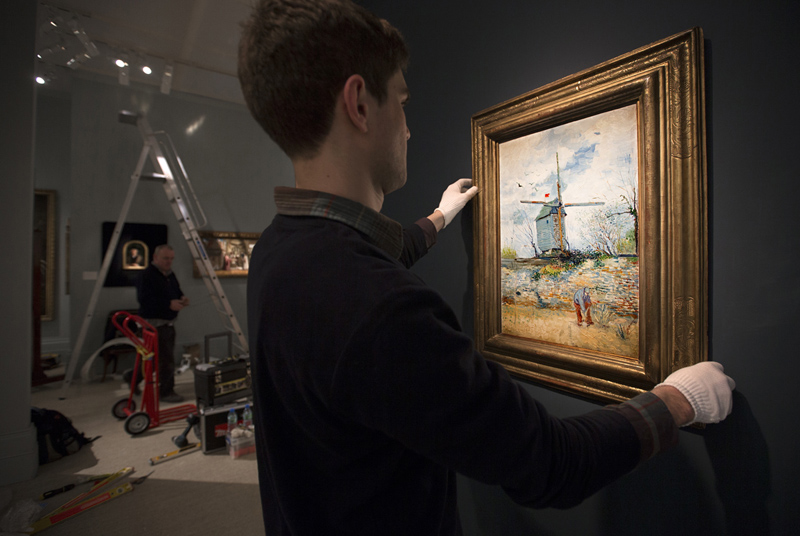
TEFAF. Vincent van Gogh’s ‘Moulin de la Galette’ (1887) at gallery Dickinson. The asking price is “in the 8 figures” / Photo: Harry Heuts
Maastricht 10 03 2014.
TEFAF 2014 – Dickinson Stand 402Title: Moulin de la GaletteArtist/Maker: Vincent van Gogh (1853 – 1890)Caption: Oil on canvas 55 x 38.5 cm (21 1/2 x 15 1/4 in.) Signed lower left: Vincent 1887Detailed description: This played a key role in making Vincent van Gogh internationally famous and was later owned by the American millionaire on whom Ian Fleming modelled his arch-villain Goldfinger. “This is a painting that has everything,” says James Roundell of Dickinson. “It was painted in Paris during a hugely important period in Van Gogh’s life when he changed from painting sombre scenes of Dutch peasant life to producing brilliantly-coloured Post-Impressionist landscapes. It is rare to have such a prominent signature in a work of this date and it is one of only two of his series of paintings depicting windmills of Montmartre still in private hands, which was last exhibited in public in 1965.” Van Gogh underwent a stunning artistic evolution in the two year period that followed his arrival in Paris to live with his brother Theo in 1886. Encouraged by Theo to emulate the Impressionists to make his work more saleable, he changed from producing Dutch rural scenes to painting some of the most innovative and expressive colourist paintings of all time. Moulin de la Galette was painted in April 1887 at the height of this process of conversion and was one of his series of pictures of windmills in the racy artistic quarter of Montmartre. This vibrant painting is signed by Van Gogh, which is rare. Theo van Gogh did not long survive Vincent’s death in July 1890 and died the following January when ownership of Moulin de la Galette passed to his widow Johanna van Gogh-Bonger. The canny Johanna now owned Theo’s flat which was crammed full of Vincent’s paintings and letters. She was determined to make Vincent posthumously famous and set about organising a series of exhibitions of his work over the next few years of which the most c